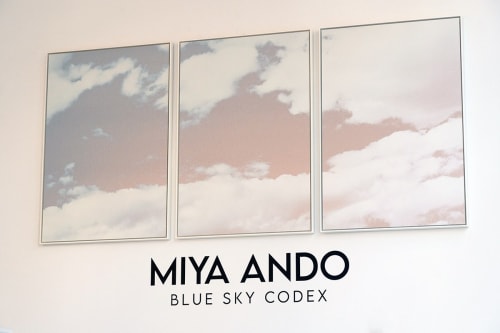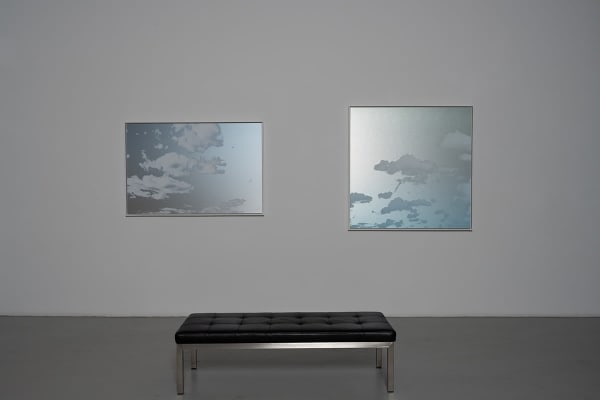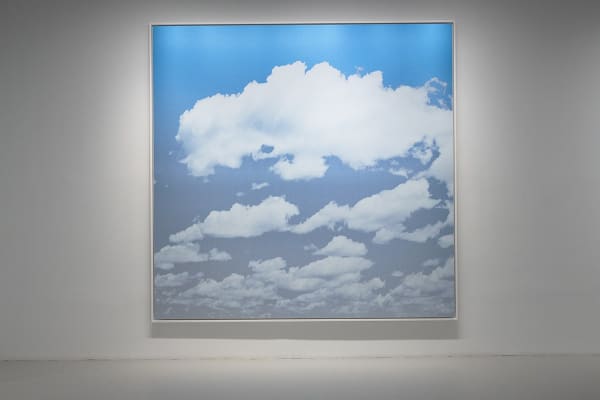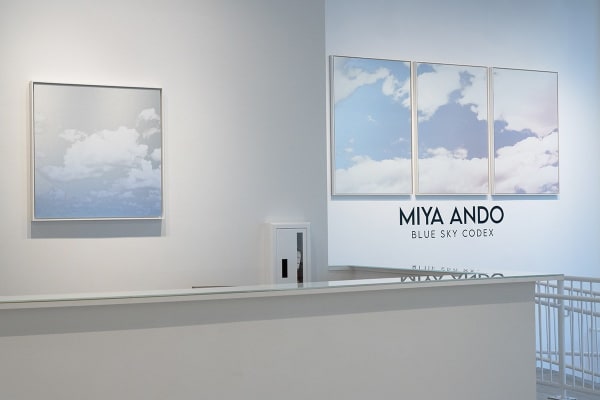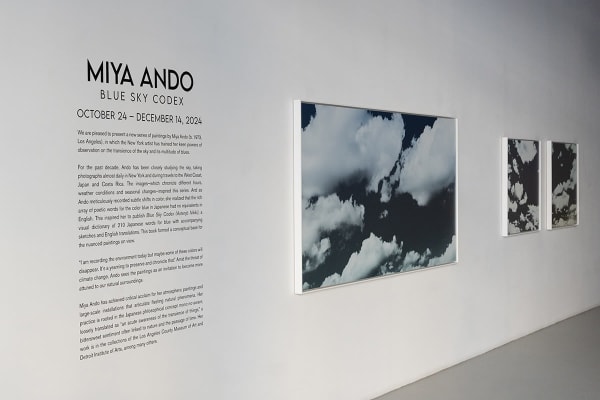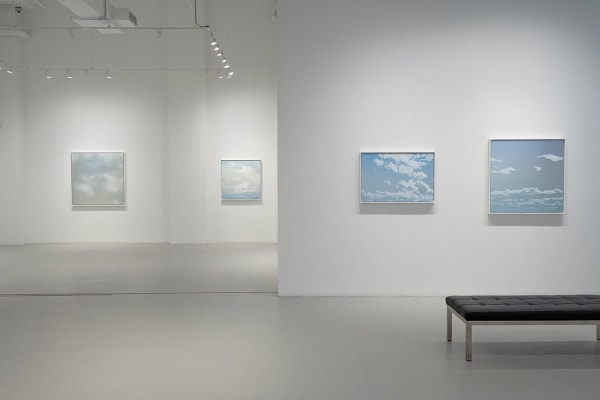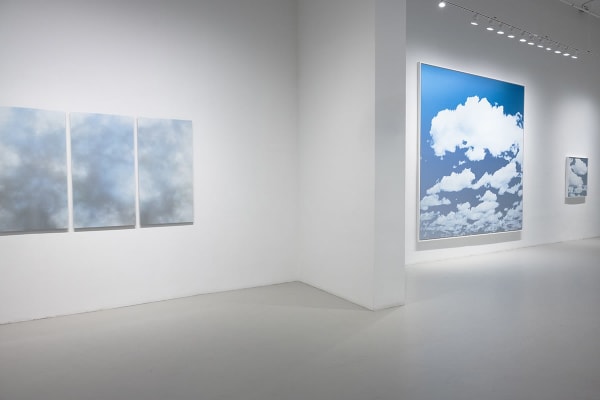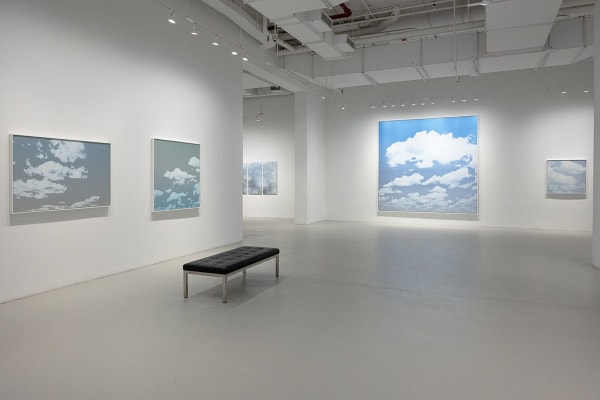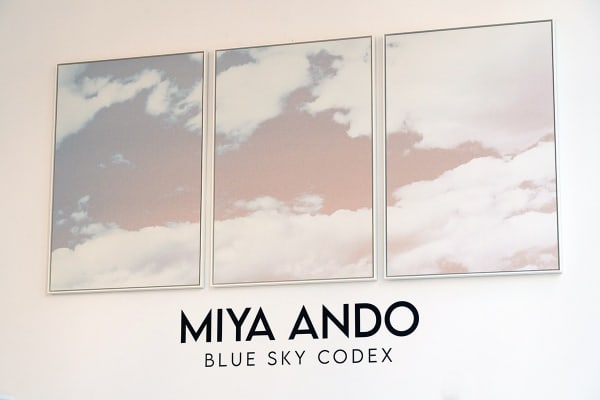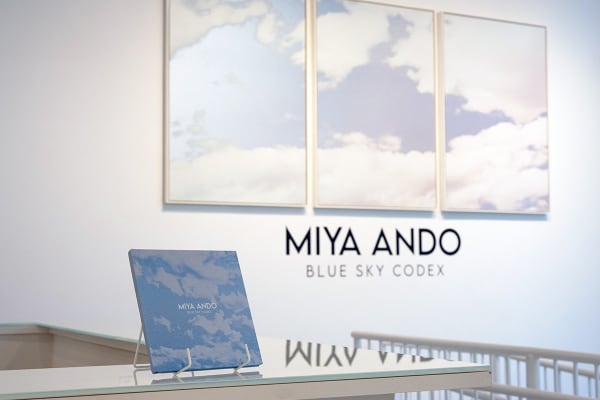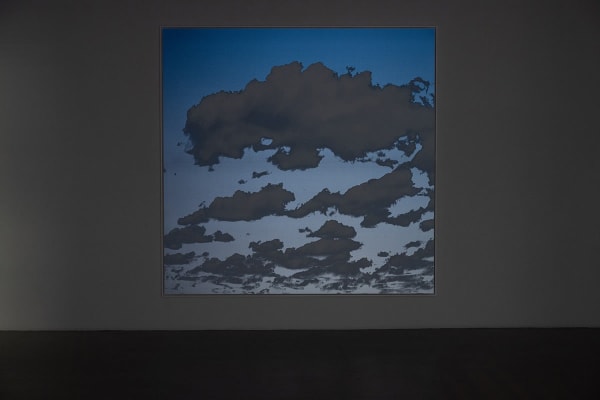Miya Ando: Blue Sky Codex : Sundaram Tagore
Sundaram Tagore presents a new series of paintings on metal by Miya Ando (b. 1973, Los Angeles), which explores subtle shifts in the coloration of the sky. For the past decade, Ando has been closely studying the sky, taking photographs almost daily in New York as well as during her travels to the West Coast, Japan and Costa Rica. The images—which chronicle different hours, weather conditions and seasonal changes—inspired the paintings on view. In conjunction with this show, Ando has released Blue Sky Codex (Aotenjō Nikki), an illustrated Japanese-English visual dictionary documenting 210 shades of blue.
Ando has achieved critical acclaim for her atmospheric paintings and large-scale installations that articulate fleeting natural phenomena. Her practice is rooted in the Japanese philosophical concept mono-no-aware, loosely translated as “an acute awareness of the transience of things,” a bittersweet sentiment often linked to nature and the passage of time.
The artist describes the new series as a means of mapping the sky, recording time, and locating her place in the world through minute observation of the varied tones of the color blue. At once diaristic and personal, this compendium of paintings also has universal resonance. “In many senses this project functions as an extinction diary,” she says. “I am recording the environment today but maybe some of these colors will disappear. It’s a yearning to preserve and chronicle that.” Amid the threat of climate change, Ando sees the paintings as an invitation to become more attuned to our natural surroundings.
When Ando began observing the sky, she learned that there are a multitude of poetic words for the color blue in Japanese, but found these words missing from the English lexicon. This inspired her to publish Blue Sky Codex (Aotenjō Nikki), a visual dictionary containing 210 Japanese words for blue translated into English. For each shade, she made a small pastel sketch and a corresponding photograph of the color found in the sky. The blues listed range from “India Indigo,” a velvety dark blue described as evoking “the deep and unfathomable ocean,” to “Wisteria Mouse,” a lavender-gray shade derived from the image of mouse passing a wisteria flower. Exposing lacunae in the English language, the book elucidates the deep appreciation of nature embedded in Japanese culture. It also formed a conceptual base for the nuanced paintings on view.
Ando’s profound understanding of color shines through in this ethereal body of work. The paintings range from a triptych that records a pale-blue twilight fading to pink on an autumn day in Tokyo to a summer afternoon in New York where a bright-blue sky is visible through a veil of silvery clouds. Ando uses watercolor-like techniques as well as printing techniques to layer translucent washes of ink and pigment mixed with urethane onto aluminum. Leaving some areas bare, she allows the metal to shine amid passages of color capturing the mercurial nature of the sky. In some works, she also embeds micronized pure silver, a fine dust-like material, giving the works a luminous quality.
In many senses this compendium of paintings operates as a single, monumental work. Seen collectively, the images immerse viewers in the expansiveness of the sky and invite reflection on nature not only as a precious resource but also as a source of wisdom. “Clouds and the sky may appear ordinary, but they can also be conceptually rich,” says Ando. “They are a vivid reminder of the impermanence and the transience of life, which is the foundation of my practice.”
